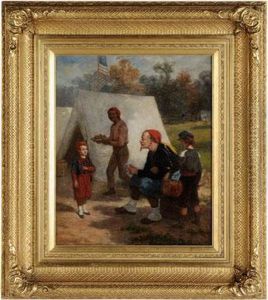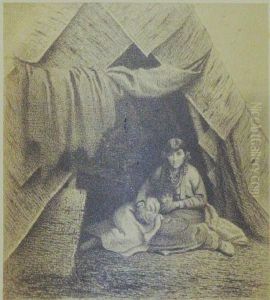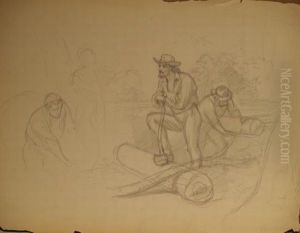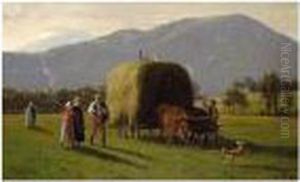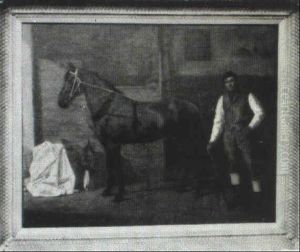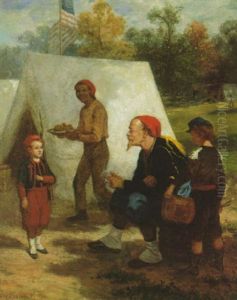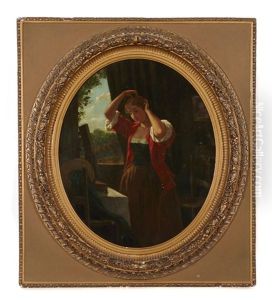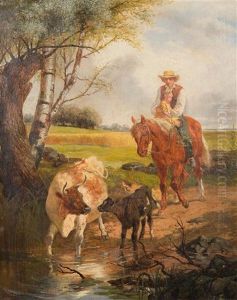John Whetten Ehninger Paintings
John Whetten Ehninger was an American genre and landscape painter, associated with the Hudson River School. Born in New York City in 1827, Ehninger displayed an early interest in art and pursued his education in this field with great enthusiasm. He traveled to Europe to study, spending significant time in Germany where he was influenced by the Düsseldorf School of painting, a movement known for its detailed landscapes and historical subjects. This experience shaped Ehninger's artistic style, blending European influences with American themes.
Upon returning to the United States, Ehninger became an active member of the New York art scene. He was particularly noted for his genre paintings, which often depicted scenes of everyday life with a sentimental or nostalgic quality. His works were characterized by their fine detail, vibrant color palette, and the emotional depth of their subjects. Ehninger was also known for his landscapes, which captured the beauty of the American countryside, reflecting the ideals of the Hudson River School. His paintings often explored the interaction of humans and nature, suggesting a harmonious balance between the two.
Ehninger's contributions to American art were recognized during his lifetime. He was a member of the National Academy of Design and participated in numerous exhibitions, where his works received critical acclaim. Despite his success, he remained dedicated to his craft, constantly experimenting with new techniques and subjects.
John Whetten Ehninger passed away in 1889, leaving behind a legacy that has continued to influence American art. His paintings are held in several prestigious collections, including the Metropolitan Museum of Art in New York. Ehninger's work is celebrated for its ability to capture the spirit of American life and landscape during the 19th century, making him a significant figure in the history of American art.



